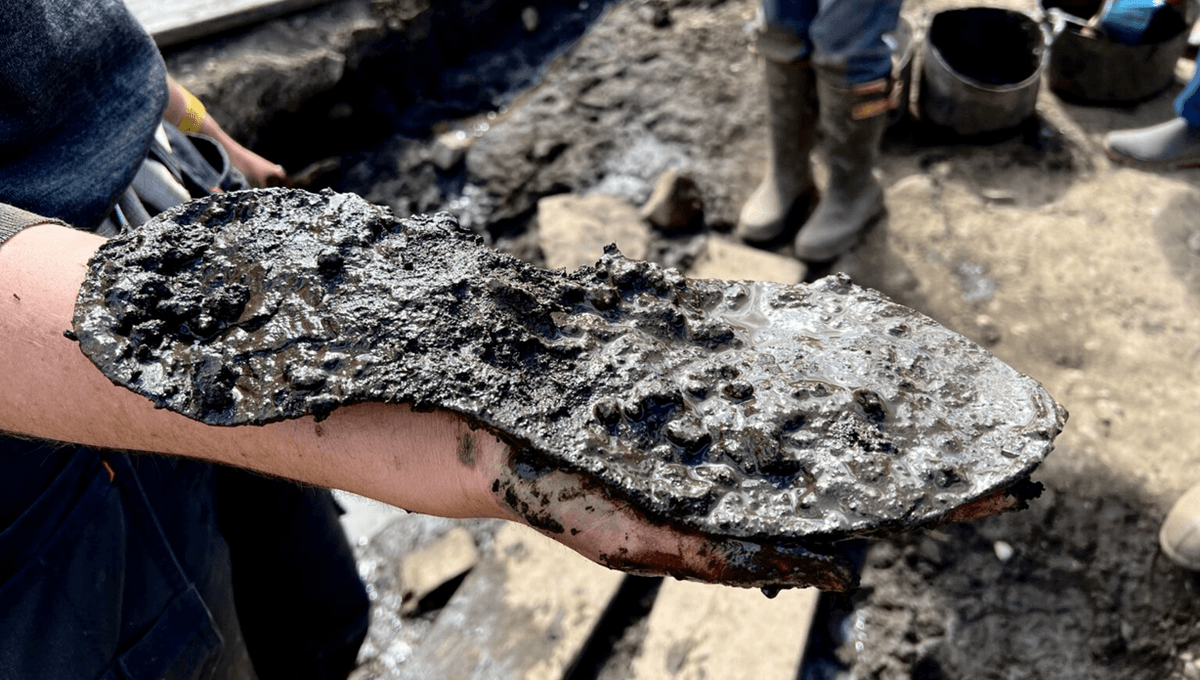A Roman soldier stationed at Hadrian’s Wall had feet so big that he would have had trouble finding shoes that fit in today’s stores, so one can only imagine the problems he had tracking down a pair of size 15 (US) military boots at the northern edge of the Empire. Yet not only did the hobbit-footed legionary manage to keep his trotters clad, but, amazingly, his gigantic leather shoes have remained intact for almost two millennia, enabling archaeologists to gain new insights into Roman cobbling techniques.
Measuring 32 centimeters in length (12.6 inches), the shoes were unearthed at the site of an ancient fort called Magna, which once guarded the junction between two major Roman roads called the Maiden Way and the Stanegate. Built around 80 CE, the fort was also a stone’s throw from Hadrian’s Wall, which was constructed in 122 CE and marked the northern border of the Roman Empire, acting as a protective barrier against the “barbarian” tribes that lived in what is now Scotland. Researchers excavating the defensive ditches around Magna found two shoes last month, both of which had survived the passage of time thanks to the anaerobic conditions in the waterlogged mud. The first of the pair was missing its toe area, making it difficult to determine its full size, though the second featured a complete sole, revealing the extraordinary length of the wearer’s feet and drawing gasps of amazement from the excavation team. In today’s sizes, the shoes would have been the equivalent of a UK men’s size 12 to 14, which is 13 to 15 in the US. In addition to enlightening us as to the size of Roman feet, the discovery also sheds light on how Roman shoes were made, with multiple layers of leather connected with thongs, stitches and hobnails to form the sole. Exactly who the footwear belonged to is a mystery, although inscriptions at Magna reveal that the fort once hosted a cohort of Syrian archers, as well as Dalmatian infantry and other Roman military units. Yet it wasn’t just soldiers who occupied the site. A large settlement is thought to have existed at the junction of these two Roman roads in northern England, and the research team recently came across a marble make-up palette which would have been used by a female citizen to mix pigments with fats or oils in order to create lipstick, blush, or other facial cosmetics. Other discoveries from this year’s excavation include a fine-toothed wooden comb, pieces of pottery and some wooden tent pegs, all of which help to paint a picture of life on the Roman frontier 2,000 years ago.





